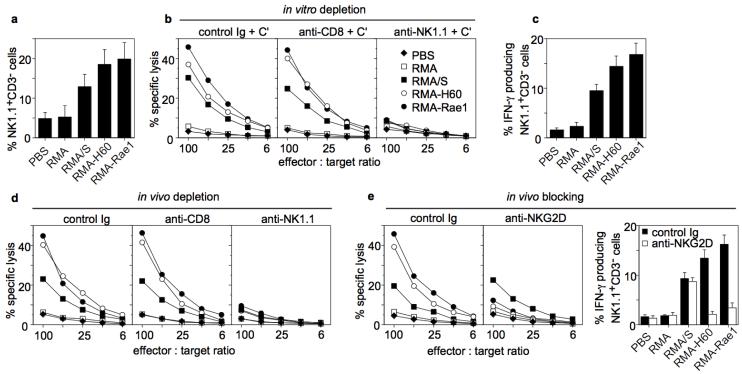Figure 5.
RMA cells expressing NKG2D ligands stimulate NK cell recruitment and activation in vivo. Groups of five B6 mice were injected intraperitoneally with 5×106 irradiated RMA transductants, RMA/S cells or PBS. Peritoneal wash cells were recovered two days later. Compared to RMA cells, ligand-transduced RMA cells stimulated elevated percentages of NK (NK1.1+ CD3− ) cells (a), which exhibited enhanced capacity to lyse YAC-1 target cells (b), and more of which produced IFN-γ when stimulated with YAC-1 target cells (c). Effector cells were destroyed by complement lysis with anti-NK1.1 but not anti-CD8 antibody (b), and pretreatment of mice with anti-NK1.1 antibody but not with anti-CD8 antibody prevented induction of cytotoxic activity (d). e, NK cell induction by ligand-transduced cells was blocked by injection of a non-depleting anti-NKG2D antiserum, but not by a control antiserum, just prior to tumor cell inoculation. The response to RMA/S cells was unaffected. Lysis of YAC-1 tumor cells and production of IFN-γ after stimulation with YAC-1 target cells were assayed. Data are representative of two experiments.

